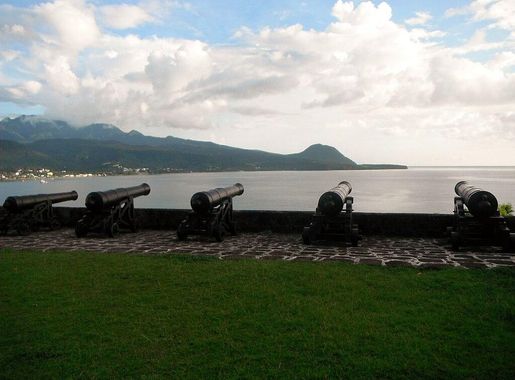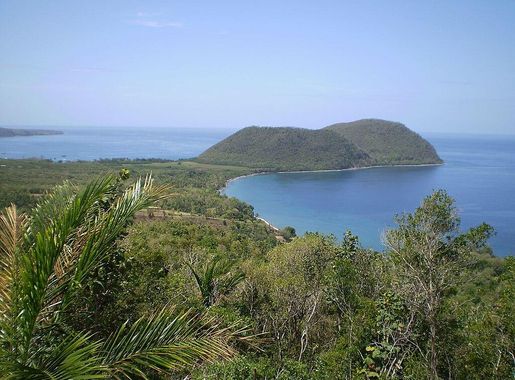
Cabrits National Park: A Natural Gem in Dominica
Discover Cabrits National Park in Dominica: a blend of tropical forests, historical forts, and vibrant marine life, offering an unforgettable experience for nature and history enthusiasts.
Cabrits National Park, located on the scenic island of Dominica, is a must-visit for nature lovers and history enthusiasts alike. This lush, green peninsula is known for its rich biodiversity and historical significance. The park covers an area of nearly 1,300 acres and offers a unique blend of tropical forest, wetlands, and coral reefs. Visitors can enjoy stunning views of Douglas Bay and Prince Rupert Bay, as well as the twin volcanic peaks that give the park its name. One of the main attractions within Cabrits National Park is Fort Shirley, a restored 18th-century British garrison. The fort provides a fascinating glimpse into the island's colonial past and offers panoramic views of the surrounding landscape. The park also features well-marked hiking trails that lead through dense forests, where you can spot a variety of bird species and other wildlife. For those interested in marine life, the park's pristine waters are perfect for snorkeling and diving, revealing vibrant coral reefs and an array of marine creatures. Whether you're hiking through the lush trails, exploring the historical ruins, or diving into the clear waters, Cabrits National Park offers an unforgettable experience. The park's diverse ecosystems and rich history make it a unique destination that showcases the natural and cultural heritage of Dominica.
Local tips in Cabrits National Park
- Wear comfortable hiking shoes as the trails can be uneven and steep in places.
- Bring insect repellent to protect yourself from mosquitoes and other insects.
- Visit early in the morning to avoid the midday heat and have a more peaceful experience.
- Don't forget to bring a reusable water bottle to stay hydrated during your visit.
- Check the local weather forecast before planning your visit, as some trails may become slippery after rain.
Cabrits National Park: A Natural Gem in Dominica
Cabrits National Park, located on the scenic island of Dominica, is a must-visit for nature lovers and history enthusiasts alike. This lush, green peninsula is known for its rich biodiversity and historical significance. The park covers an area of nearly 1,300 acres and offers a unique blend of tropical forest, wetlands, and coral reefs. Visitors can enjoy stunning views of Douglas Bay and Prince Rupert Bay, as well as the twin volcanic peaks that give the park its name. One of the main attractions within Cabrits National Park is Fort Shirley, a restored 18th-century British garrison. The fort provides a fascinating glimpse into the island's colonial past and offers panoramic views of the surrounding landscape. The park also features well-marked hiking trails that lead through dense forests, where you can spot a variety of bird species and other wildlife. For those interested in marine life, the park's pristine waters are perfect for snorkeling and diving, revealing vibrant coral reefs and an array of marine creatures. Whether you're hiking through the lush trails, exploring the historical ruins, or diving into the clear waters, Cabrits National Park offers an unforgettable experience. The park's diverse ecosystems and rich history make it a unique destination that showcases the natural and cultural heritage of Dominica.
When is the best time to go to Cabrits National Park?
Iconic landmarks you can’t miss
Emerald Pool
Experience the tranquility of the Emerald Pool, a stunning natural oasis in Dominica's lush rainforest, perfect for a refreshing escape and unforgettable memories.
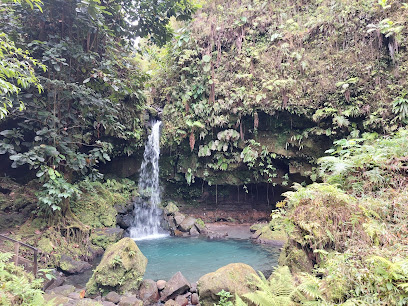
Trafalgar Falls
Trafalgar Falls: A captivating natural wonder in Dominica, where twin waterfalls cascade into crystalline pools amid lush tropical landscapes.
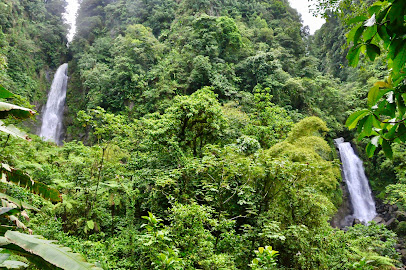
InterContinental Dominica Cabrits Resort & Spa, an IHG Hotel
Experience the ultimate luxury at InterContinental Dominica Cabrits Resort & Spa, where stunning nature meets modern elegance in the heart of the Caribbean.

Dominica
Explore the lush landscapes and vibrant culture of Dominica, the Caribbean's hidden gem known as the Nature Island.
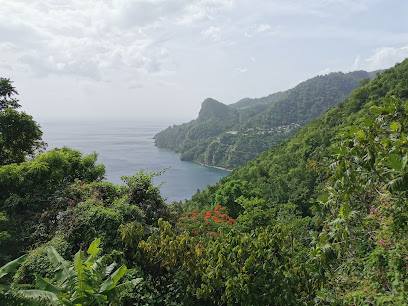
Titou Gorge
Explore the breathtaking Titou Gorge in Dominica, a natural wonder perfect for swimming, hiking, and experiencing Caribbean wildlife in a stunning landscape.
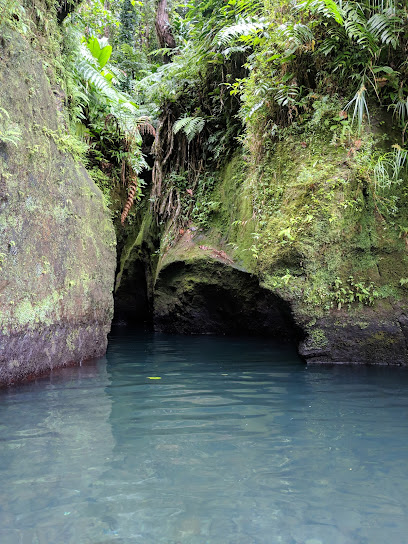
Jungle Bay Dominica
Experience luxury and tranquility at Jungle Bay Dominica, where eco-friendly practices meet stunning Caribbean landscapes.
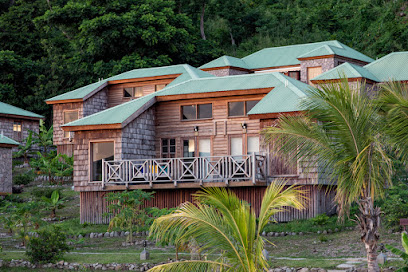
Ti Kwen Glo Cho
Discover tranquility and rejuvenation at Ti Kwen Glo Cho, a resort hotel and massage spa nestled in the heart of Wotten Waven, Dominica.
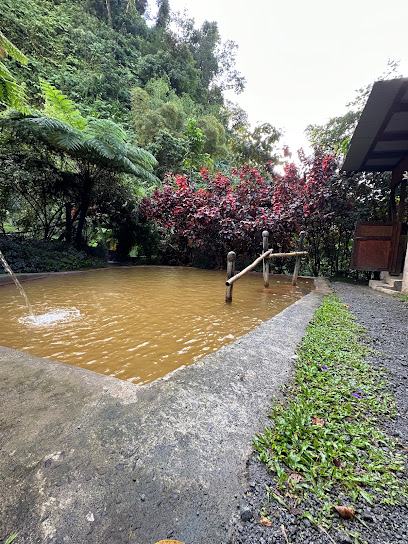
Champagne Reef, Dominica
Discover the mesmerizing underwater world of Champagne Reef in Dominica, where volcanic bubbles meet vibrant marine life for an unforgettable aquatic adventure.
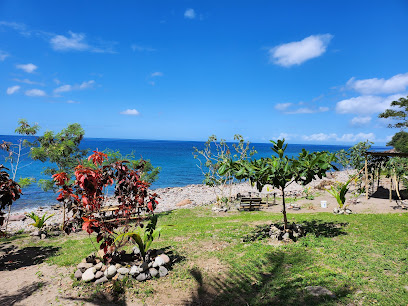
Fort Shirley
Immerse yourself in the historical splendor and natural beauty of Fort Shirley, a captivating landmark in Dominica's Portsmouth.
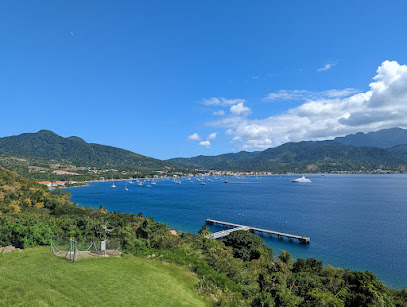
Kalinago Barana Aute
Explore the vibrant heritage of the Kalinago people at Kalinago Barana Aute, a cultural center showcasing crafts, cuisine, and traditions in Dominica.
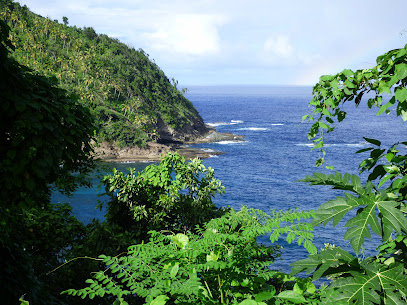
Morne Trois Pitons National Park
Discover the breathtaking landscapes and unique ecosystems of Morne Trois Pitons National Park, a UNESCO World Heritage site in Dominica.

Rosalie Bay Eco Resort & Spa
Experience the serene beauty of Dominica at Rosalie Bay Eco Resort & Spa, where luxury meets nature in a breathtaking tropical setting.

Secret Bay
Discover Secret Bay, a luxurious resort hotel in Portsmouth, Dominica, where nature meets elegance for an unforgettable getaway.

Papillote Tropical Gardens
Explore the breathtaking beauty of Papillote Tropical Gardens in Trafalgar, a tropical paradise filled with vibrant flora and serene waterfalls.
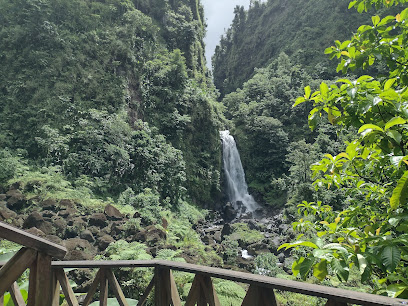
Chaudiere Pool
Explore the tranquil beauty of Chaudiere Pool, a stunning natural attraction in Dominica, perfect for swimming, hiking, and relaxation amidst nature.
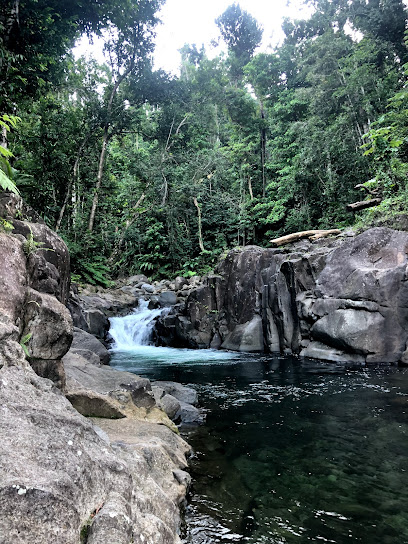
Essential places to dine
InterContinental Dominica Cabrits Resort & Spa, an IHG Hotel
Discover unparalleled luxury at InterContinental Dominica Cabrits Resort & Spa amidst breathtaking landscapes and vibrant Caribbean culture.

Keepin'It Real
Discover delicious Caribbean cuisine and thrilling water sports at Keepin'It Real near Toucari Beach.
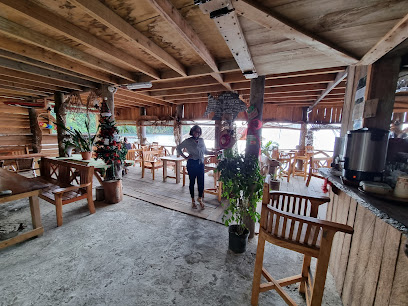
Purple Turtle Beach Club
Discover culinary delights at Purple Turtle Beach Club - where vibrant flavors meet breathtaking coastal views in Portsmouth.

Chez Wen Cuisine
Discover exquisite seafood dining at Chez Wen Cuisine in Scott's Head, where fresh flavors meet breathtaking ocean views.

Sunset Bay Club & SeaSide Dive Resort
Experience luxurious relaxation and thrilling diving adventures at Sunset Bay Club & SeaSide Dive Resort in beautiful Baroui, Dominica.

Lacou Melrose House
Discover the vibrant flavors of Dominica at Lacou Melrose House in Roseau – where culinary excellence meets Caribbean charm.
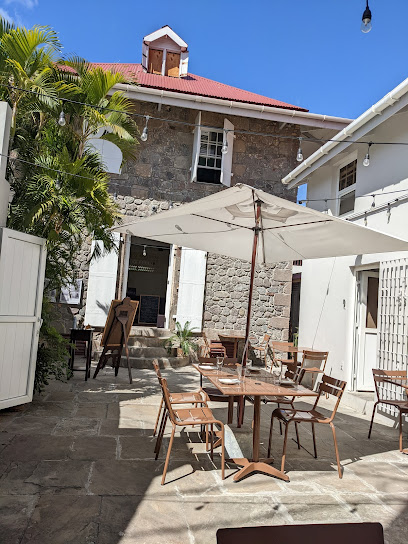
Coral Reef Bar & Restaurant
Discover culinary bliss at Coral Reef Bar & Restaurant in Calibishie – where fresh seafood meets stunning ocean views.

PoZ' Restaurant & Bar Calibishie
Discover culinary delights at PoZ' Restaurant & Bar in Calibishie – where local flavors meet stunning Caribbean views.
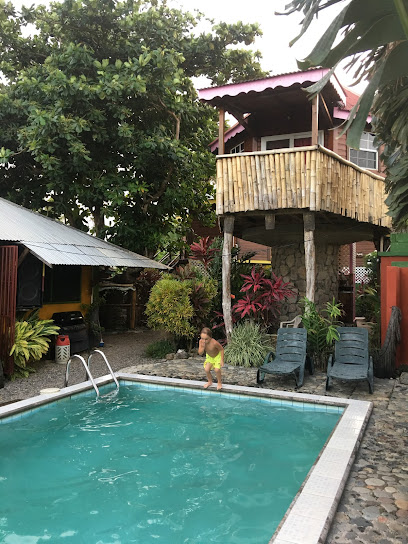
Hotel The Champs
Discover tranquility and adventure at Hotel The Champs in Portsmouth, where stunning sea views meet exceptional hospitality.
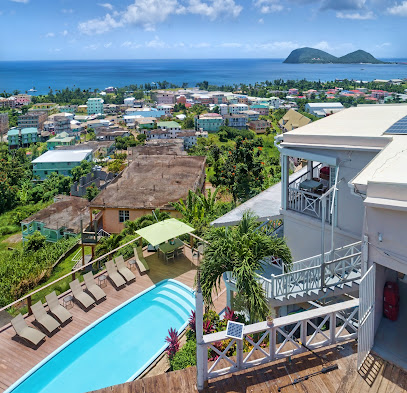
Pagua Bay House
Discover your tropical retreat at Pagua Bay House in Marigot - a harmonious blend of luxury accommodations, delicious dining, and stunning sea views.

Batibou Beach
Discover Batibou Beach - where stunning landscapes meet delicious grilled cuisine in Hampstead's serene paradise.
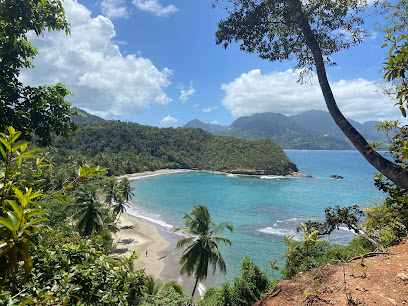
Le Petit Paradis
Experience unparalleled comfort and exquisite Caribbean cuisine at Le Petit Paradis in beautiful Wotten Waven.
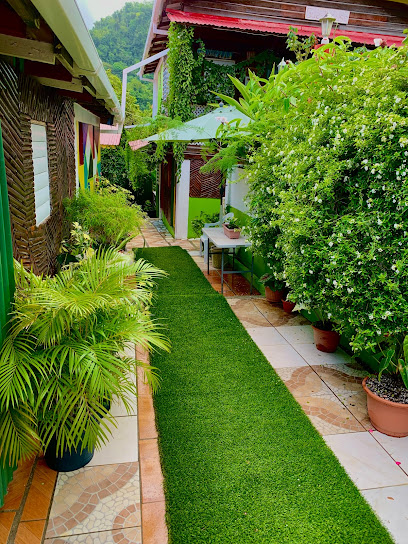
The Great Old House
Discover authentic Caribbean flavors at The Great Old House in Roseau - where every meal is a celebration of local culture.
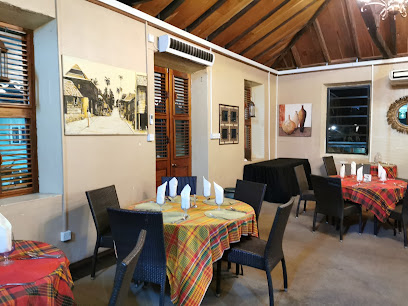
Zeb Zepis Bistro
Discover culinary delights at Zeb Zepis Bistro near Emerald Pool – where local flavors meet breathtaking views in Dominica.
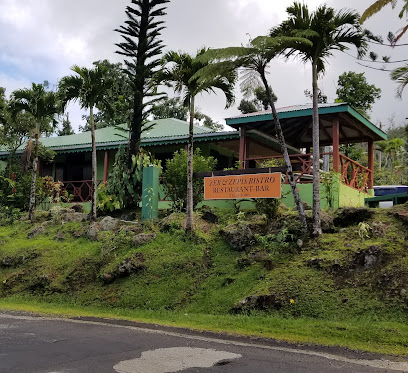
Infinity Restaurant Bar & Grill
Discover culinary excellence at Infinity Restaurant Bar & Grill in Portsmouth - where local flavors meet international flair in a stunning setting.

Markets, malls and hidden boutiques
Astaphan Supermarket
Discover the local flavors and essentials at Astaphan Supermarket, your one-stop shopping destination in the heart of Roseau, Dominica.

Cabrits National Park
Explore the lush landscapes, rich biodiversity, and historical treasures of Cabrits National Park, a must-visit destination in Dominica.
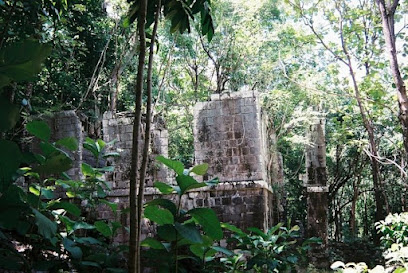
Cabrits Dive Center
Discover the vibrant underwater world at Cabrits Dive Center, your premier diving destination in Portsmouth, Dominica.

Mams
Discover the essence of local life at Mams Grocery Store in Massacre, offering fresh produce and traditional delicacies.

Lindo Mart
Explore the vibrant Lindo Mart in Roseau for fresh produce, quality meats, and local delicacies that showcase the flavors of Dominica.

James Store
Discover the charm of Portsmouth at James Store, the ultimate shopping destination for unique crafts and memorable souvenirs.

Northern Foods & Supplies
Discover the flavors of Dominica at Northern Foods & Supplies, your go-to grocery store for fresh produce and local delicacies in Portsmouth.

J C Ocean Adventures
Explore the vibrant underwater world of Dominica with J C Ocean Adventures, your premier dive shop in Cabrits National Park.
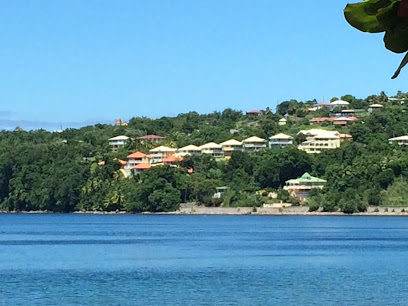
Savers Enterprises
Explore the flavors of Portsmouth at Savers Enterprises, your premier grocery destination for fresh produce and local delicacies.

Farmacy
Discover the vibrant local flavors of the Dominican Republic at Farmacy in Pont Cassé, where fresh produce and friendly service await.

Sea Breeze Mini Mart and Bar
Experience the authentic flavors and warm hospitality of the Caribbean at Sea Breeze Mini Mart and Bar in Anse De Mai.

Yellow House Mini Mart
Explore local flavors and fresh produce at Yellow House Mini Mart in Portsmouth, a must-visit grocery store for an authentic Dominican experience.
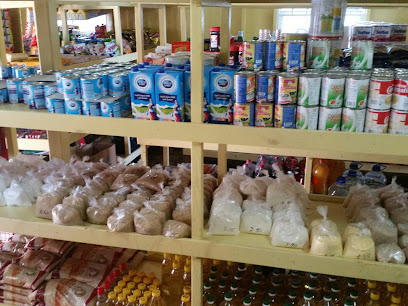
Duty Free Emporium
Discover unbeatable deals on luxury goods and local crafts at the Duty Free Emporium in Roseau, your ultimate shopping destination.

Beach Avenue, Indian River, Dominica
Discover the essence of Dominica's fashion and culture at Beach Avenue, a premier clothing store in Indian River.

Majic Mart
Explore Majic Mart in Mahaut for fresh local produce, unique Caribbean items, and a genuine shopping experience that reflects the heart of the community.

Essential bars & hidden hideouts
Roots Rock Bar & Restaurant
Experience the essence of Caribbean dining at Roots Rock Bar & Restaurant on Belle Hall Beach, where delicious cuisine meets vibrant island culture.
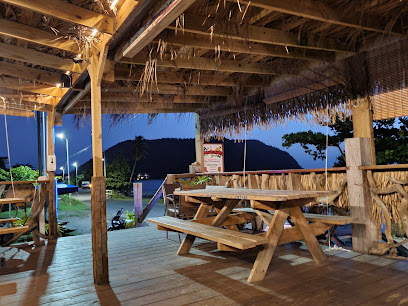
Sea Bird Bar & Grill
Experience the best of Caribbean cuisine with stunning ocean views at Sea Bird Bar & Grill in Portsmouth, Dominican Republic.
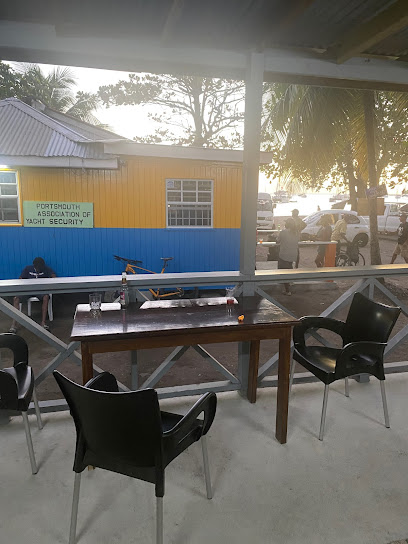
What Is Man Bar
Discover Caribbean flavors at What Is Man Bar in Portsmouth, where vibrant atmosphere meets delicious cuisine for an unforgettable dining experience.

Kish Tree View Bar & Grill Plus Yacht Services
Discover the serene Kish Tree View Bar & Grill in Portsmouth – where delicious food meets stunning lagoon views and yacht adventures await.
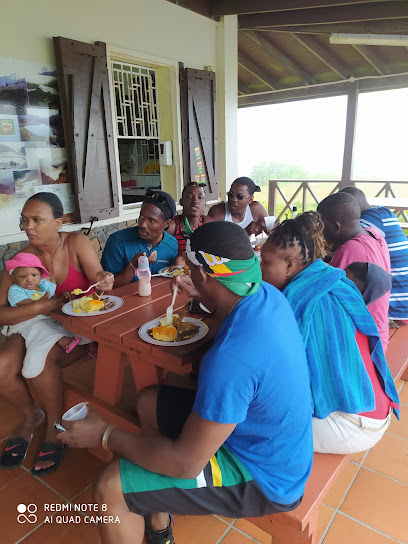
Sagittarius 2 Reggae Bar and Grill
Indulge in Dominica's vibrant culture at Sagittarius 2 Reggae Bar and Grill, where delicious food meets lively reggae rhythms.
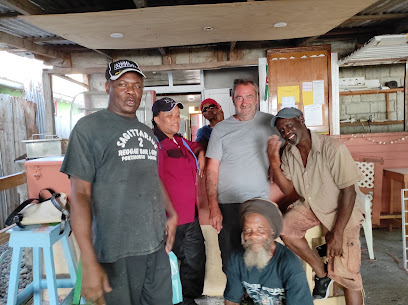
Reef Bar
Experience the vibrant atmosphere of Reef Bar in Toucari, where tropical drinks and stunning sea views create unforgettable moments.

Wop Wop Snacks and Bar
Discover the lively atmosphere of Wop Wop Snacks and Bar in Portsmouth, where local flavors meet vibrant nightlife and unforgettable experiences.

Never Thirsty Bar and Grill
Experience the vibrant flavors and warm hospitality at Never Thirsty Bar and Grill, Portsmouth's gem for food and drink by the sea.

Coco Mangos bar and grill
Experience the vibrant flavors of local cuisine at Coco Mangos bar and grill in Portsmouth, a culinary gem that delights every visitor.

Hibiscus Hideaway
Experience the tropical charm and vibrant atmosphere of Hibiscus Hideaway, the perfect bar for relaxation and local culture in Portsmouth.

Janus Bar
Experience the vibrant culinary scene at Janus Bar in Portsmouth, where local flavors and a welcoming atmosphere await every visitor.

Matox Bar & Grill
Experience the local flavors and vibrant atmosphere at Matox Bar & Grill in Lagoon Village, Portsmouth - a culinary gem for every traveler.

WATER FRONT REGGAE SPORT
Discover the lively ambiance and delicious flavors of Water Front Reggae Sport, a top bar in Portsmouth offering a taste of Caribbean culture.

Chill.A.Bit
Experience the laid-back charm of Chill.A.Bit in Savanne Paille, where refreshing drinks and local vibes await to enhance your Caribbean getaway.

Rumfire Bar
Discover the vibrant Rumfire Bar in Cabrits Douglas Bay, offering stunning ocean views and expertly crafted cocktails in a lively atmosphere.
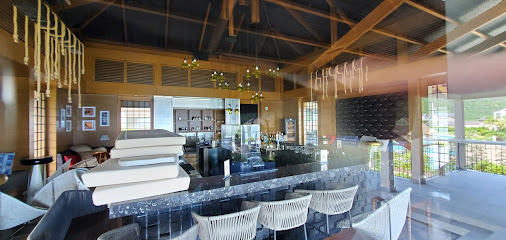
Local Phrases about Cabrits National Park
-
- HelloBonjou
[bon-joo] - GoodbyeOrevwa
[oh-rev-wah] - YesWi
[wee] - NoNon
[noh] - Please/You're welcomeTanpri
[tan-pree] - Thank youMèsi
[meh-see] - Excuse me/SorryEskize mwen
[es-kee-zay mwenn] - How are you?Kijan ou ye?
[kee-zhan oo yay] - Fine. And you?Byen. E ou?
[byen. ay oo] - Do you speak English?Eske ou pale angle?
[es-kay oo pah-lay ahng-lay] - I don't understandMwen pa konprann
[mwenn pah kohn-prahn]
- HelloBonjou
-
- I'd like to see the menu, pleaseMwen ta renmen wè meni a, tanpri
[mwenn tah rehn-menn way meh-nee ah, tan-pree] - I don't eat meatMwen pa manje vyann
[mwenn pah mahn-jay vee-ahn] - Cheers!Santé!
[sahn-tay] - I would like to pay, pleaseMwen ta renmen peye, tanpri
[mwenn tah rehn-menn pay-yay, tan-pree]
- I'd like to see the menu, pleaseMwen ta renmen wè meni a, tanpri
-
- Help!Ed
[ed] - Go away!Ale lwen!
[ah-lay lwehn] - Call the Police!Rele lavni!
[reh-lay lahv-nee] - Call a doctor!Rele yon doktè!
[reh-lay yohn dohk-tay] - I'm lostMwen pedi
[mwenn peh-dee] - I'm illMwen malad
[mwenn mah-lahd]
- Help!Ed
-
- I'd like to buy...Mwen ta renmen achte...
[mwenn tah rehn-menn ahsh-tay] - I'm just lookingMwen jis gade
[mwenn zjee gah-day] - How much is it?Konbyen sa koute?
[kohn-byen sah koot] - That's too expensiveSa twò chè
[sah twah shay] - Can you lower the price?Èske ou kapab ba pri a?
[es-kay oo kah-pah bah pree ah]
- I'd like to buy...Mwen ta renmen achte...
-
- What time is it?Ki lè li ye?
[kee lay lee yay] - It's one o'clockLi senkè
[lee sahn-kay] - Half past (10)Demi pase dis
[deh-mee pahz deece] - MorningMaten
[mah-tehn] - AfternoonApremidi
[ah-pray-mee-dee] - EveningAswè
[ah-sway] - YesterdayYe
[yay] - TodayJodi a
[joh-dee ah] - TomorrowDemen
[deh-men] - 1Yon
[yohn] - 2De
[day] - 3Twaz
[twahz] - 4Kat
[kaht] - 5Senk
[sahnk] - 6Sis
[sees] - 7Sèt
[set] - 8Wit
[weet] - 9Nèf
[nef] - 10Dis
[dees]
- What time is it?Ki lè li ye?
-
- Where's a/the...?Kote mwen kap jwenn yon...
[koh-tay mwenn kahp jwehn yohn] - What's the address?Ki adres la ye?
[kee ah-dres lah yay] - Can you show me (on the map)?Ou kapab montre mwen (sou kat)?
[oo kah-pahb mohn-tray mwenn (soo kaht)] - When's the next (bus)?Ki lè pròchenn la pral pase?
[kee lay proh-shenn lah prahl pah-say] - A ticket (to ....)Yon tikè (pou ....)
[yohn tee-kay poo]
- Where's a/the...?Kote mwen kap jwenn yon...
History of Cabrits National Park
-
Long before European settlers arrived, the Kalinago people inhabited the land that is now Cabrits National Park. The Kalinago were known for their seafaring skills and intricate knowledge of the local flora and fauna. They lived sustainably off the land, fishing in the surrounding Caribbean Sea and cultivating crops such as cassava. Their presence is still felt today through various cultural artifacts and oral histories passed down through generations.
-
In the late 18th century, the British established Fort Shirley within what is now Cabrits National Park. This massive garrison was designed to protect the island from French invasion and became a pivotal military site during various colonial conflicts. The fort's ruins, including barracks, cannons, and defensive walls, stand as a testament to the island's colonial history and strategic importance in the Caribbean.
-
One of the most significant historical events tied to Cabrits National Park is the Battle of Dominica in 1805. This conflict saw British and French forces clashing over control of the island. Fort Shirley played a crucial role in the British defense, and the battle ultimately resulted in a British victory. The event is a key part of the military history of the park and highlights its strategic importance during the Napoleonic Wars.
-
Following Dominica's independence from British rule in 1978, efforts were made to preserve the island's natural and historical heritage. Cabrits National Park was officially established in 1986, encompassing Fort Shirley and the surrounding natural landscape. The park aims to protect the rich biodiversity of the area, including its coral reefs, tropical forests, and various species of wildlife, while also preserving its historical landmarks for future generations.
-
Today, Cabrits National Park is not only a site of natural beauty but also a cultural treasure trove. The park serves as a venue for various cultural events and educational programs that celebrate the island's heritage. Visitors can explore the well-preserved ruins of Fort Shirley, hike through lush tropical forests, and learn about the island's history through informative displays and guided tours. The park continues to be a symbol of Dominica's rich history and enduring cultural legacy.
Cabrits National Park Essentials
-
Cabrits National Park is located on the northwest coast of Dominica, near the town of Portsmouth. The nearest international airport is Douglas-Charles Airport (DOM), approximately 45 kilometers away. From the airport, you can take a taxi or rent a car to reach the park. The drive typically takes around 1.5 hours along the scenic coastal route. Alternatively, you can arrange for a private transfer through your accommodation or tour operator.
-
Transportation options within Cabrits National Park are limited to walking and hiking, as the park is designed to be explored on foot. For getting around Dominica and reaching the park, renting a car is a convenient option. Taxis are available, but it's advisable to agree on the fare beforehand. Public buses (minibuses) operate between major towns, but their schedules can be irregular. For a more immersive experience, consider hiring a local guide for a tour of the park and its surroundings.
-
The official currency of Dominica is the Eastern Caribbean Dollar (XCD). U.S. dollars are also widely accepted. Credit cards are accepted in most hotels, restaurants, and larger shops, but it's advisable to carry cash for smaller establishments and market purchases. ATMs are available in Portsmouth and other major towns. Ensure you have enough cash before heading to more remote areas like Cabrits National Park.
-
Cabrits National Park is generally safe for tourists. However, like any travel destination, it's important to remain vigilant. Avoid isolated areas of the park after dark and keep personal belongings secure. While Dominica has a low crime rate, petty theft can occur. Be cautious in busy areas and avoid displaying valuables. Portsmouth is generally safe, but exercise standard precautions, especially at night.
-
In case of emergency, dial 999 for police, fire, or medical assistance. The nearest medical facility is the Portsmouth Hospital, located approximately 5 kilometers from Cabrits National Park. It's advisable to have travel insurance that covers medical emergencies. For minor health issues, pharmacies are available in Portsmouth. Keep emergency contact numbers handy and inform someone of your plans when hiking in remote areas.
-
Fashion: Do wear comfortable, lightweight clothing suitable for hiking and outdoor activities. Bring a hat and sunscreen. Don’t wear overly revealing clothing, especially in towns. Religion: Do respect local customs and traditions. Dominica is a predominantly Christian country, and modest dress is appreciated when visiting churches. Public Transport: Do be courteous and greet the driver and passengers when boarding. Don’t eat or drink on public transport. Greetings: Do greet locals with a friendly hello or good morning/afternoon. A handshake is common. Eating & Drinking: Do try local dishes and accept food offerings graciously. Don’t waste food, as it is considered disrespectful.
-
To experience Cabrits National Park like a local, visit during the early morning or late afternoon to avoid the heat and enjoy the park's tranquility. Engage with local guides who can offer insights into the park's history and natural features. Don't miss Fort Shirley, an 18th-century British garrison with stunning views of the surrounding area. For a unique experience, participate in a guided night hike to see the park's nocturnal wildlife. Visit the nearby town of Portsmouth to enjoy local cuisine and interact with friendly residents.
Trending Landmarks in Cabrits National Park
-
Emerald Pool
-
Trafalgar Falls
-
InterContinental Dominica Cabrits Resort & Spa, an IHG Hotel
-
Dominica
-
Titou Gorge
-
Jungle Bay Dominica
-
Ti Kwen Glo Cho
-
Champagne Reef, Dominica
-
Fort Shirley
-
Kalinago Barana Aute
-
Morne Trois Pitons National Park
-
Rosalie Bay Eco Resort & Spa
-
Secret Bay
-
Papillote Tropical Gardens
-
Chaudiere Pool
Nearby Cities to Cabrits National Park
-
Things To Do in Castle Bruce
-
Things To Do in Roseau
-
Things To Do in La Plaine
-
Things To Do in Woodlands
-
Things To Do in English Harbour
-
Things To Do in Falmouth
-
Things To Do in Liberta
-
Things To Do in Freetown
-
Things To Do in All Saints
-
Things To Do in Bolands
-
Things To Do in Codrington
-
Things To Do in Jolly Harbour
-
Things To Do in St. John's
-
Things To Do in Rodney Bay
-
Things To Do in Gros Islet

